Lack of communication
I was trying to take a photo of this Mallard pair dabbling, but every shot I got was virtually the same…
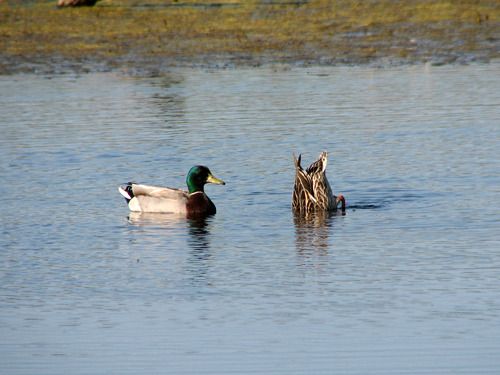
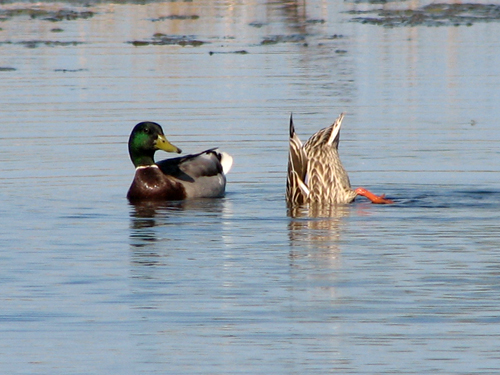
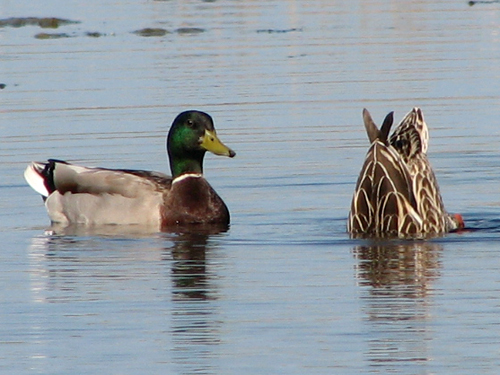

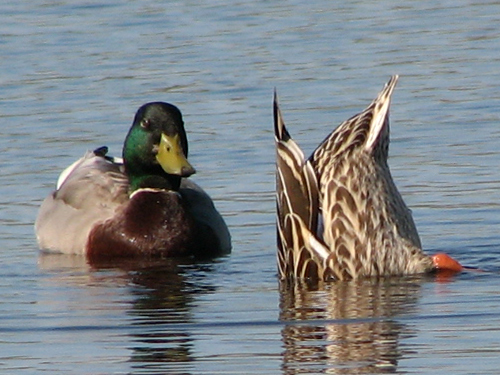
I was trying to take a photo of this Mallard pair dabbling, but every shot I got was virtually the same…





This poor Downy Woodpecker’s got an identity crisis. She thinks she’s a finch. Why else would she be going to town on a finch sock?
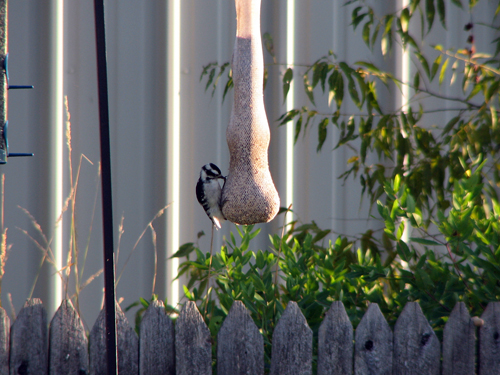
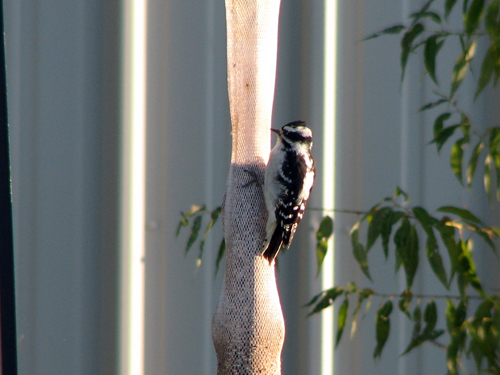
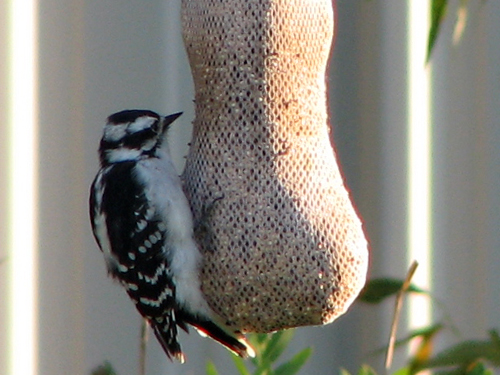
As I mentioned in the last post, I see mostly Mourning Doves and House Sparrows at the ground birdbath during the day. The Mourning Doves like to park in the water for a long time and rarely seem to splash around, unlike the robin who just got down to business right away. Sometimes the doves have a party. It usually starts with one bird lounging in the bath.
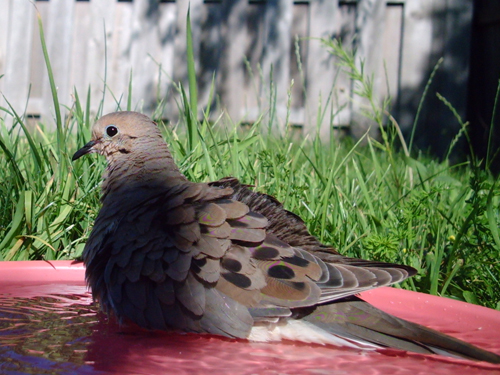
Soon another joins the fun. This one started blowing bubbles to liven things up a bit.
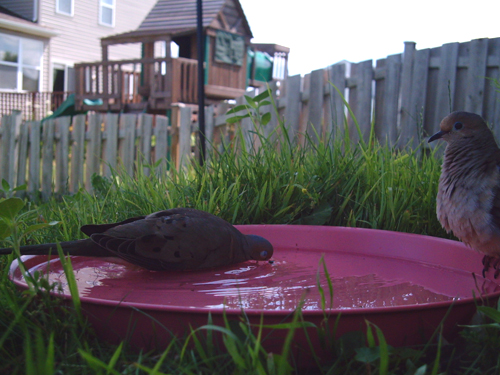
Then a third dove will join in, but the bath might be too crowded so she has to wait on the side. Sometimes it might get a little awkward.
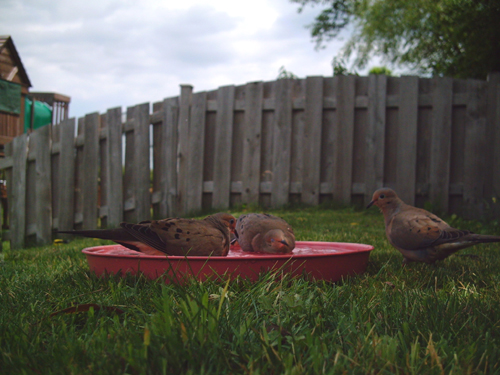
At this point one of two things might happen. 1) The party gets crashed by House Sparrows.
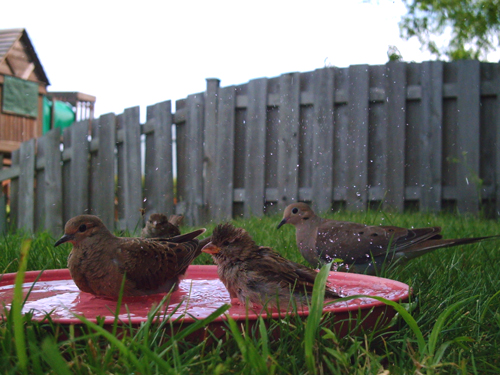
Or 2) dove orgy. A female Red-winged Blackbird walked in on this threesome.
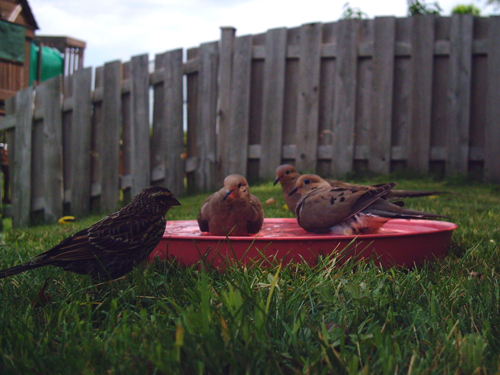
Shocking, I know!
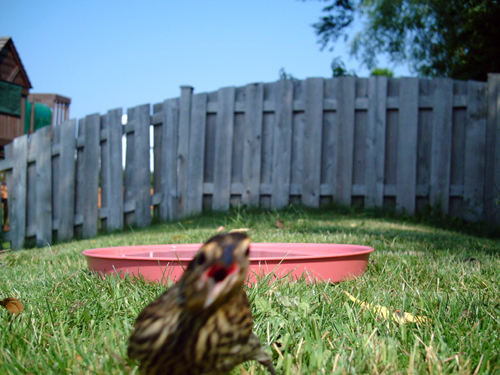
A typical day at our back yard finch sock goes something like this. Birds arrive…
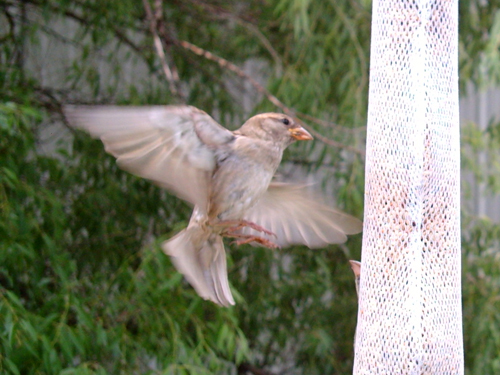
… and depart…
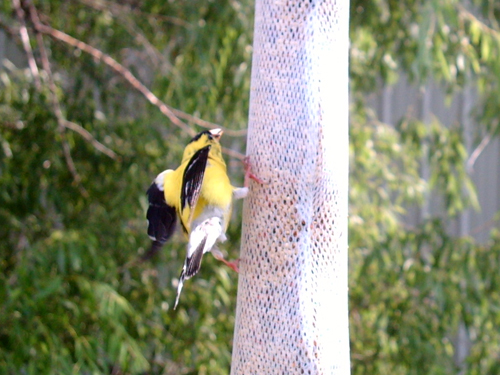
… sometimes in the same moment.
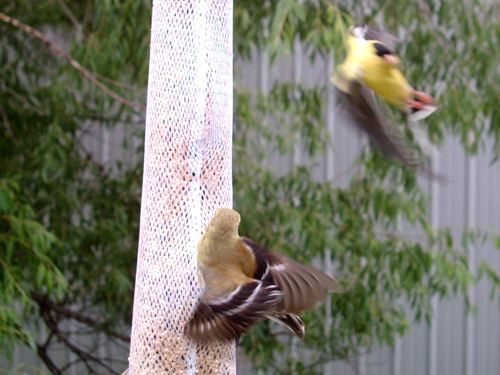
Finches mirror each other’s movements

To get at the best seeds, some birds stretch this way…
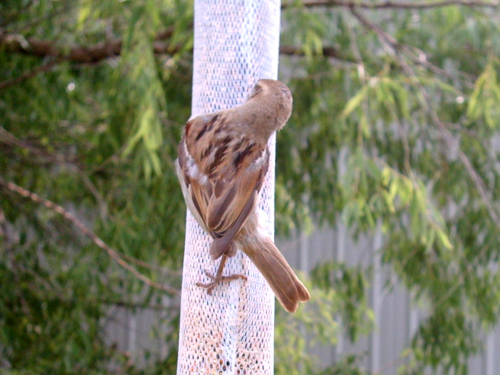
… and some stretch that way.
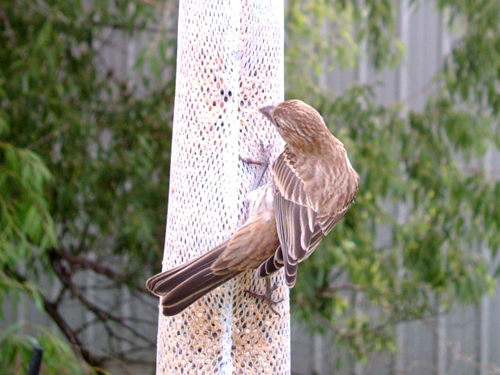
Sometimes birds look at the camera suspiciously.
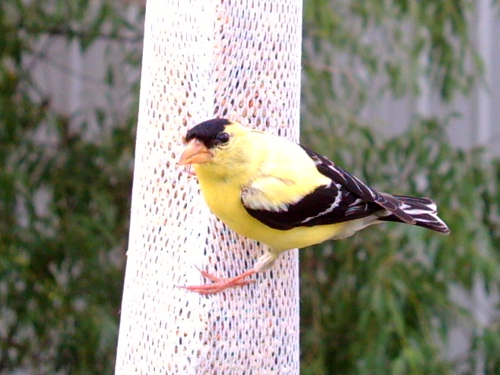
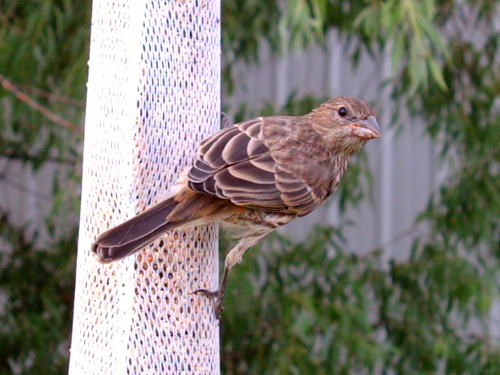
The birds get along with each other…

… or they don’t.
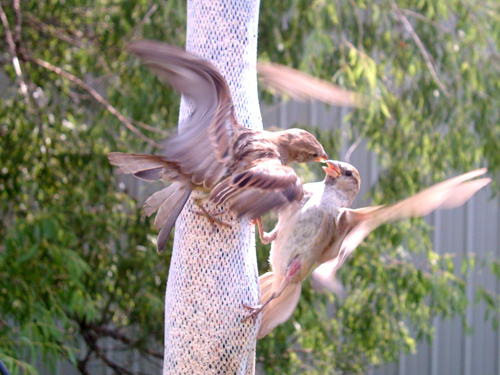
Some know when it’s best to just wait in the background for their turn at the sock.
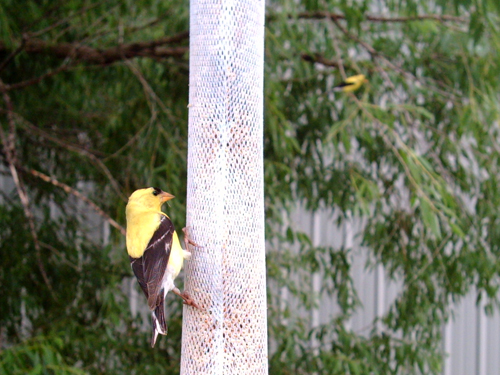
Just a typical day hangin’ out at the finch sock!
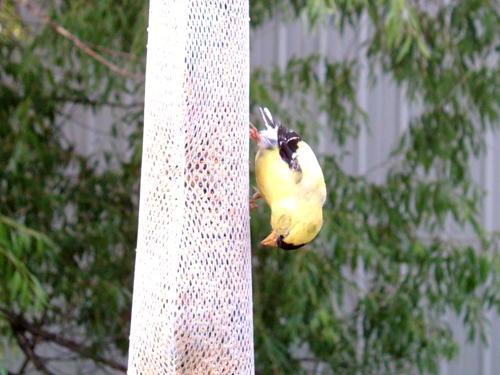
Earlier this season we heard a funny story about Eastern Screech Owls from a bird walk leader. He told of checking the Wood Duck boxes on his property one year and finding an Eastern Screech Owl inside one. The owl didn’t seem to mind his presence so he gingerly started to clear out the box around the owl. Still the owl didn’t move. He managed to clear out the box by gently moving the owl from one side of the box to the other as he cleaned. The roosting owl didn’t mind at all.
Later, our trip leader said, he learned that if found while roosting in the daytime, Eastern Screech Owls don’t mind being handled and might even like to have a scratch on the back of the neck. Sure enough, the next nest season, when he went to clear out one of the Wood Duck nest boxes, he found a roosting owl. He gave it a neck scratch, which it seemed to enjoy.
In the following years, to make nest box cleaning go a little bit faster, he would bring his wife out to the boxes with him. When he climbed up the ladder to clean out the box, if an owl was inside, he would pass the owl down to his wife to hold onto while he quickly cleared debris out of the box.
I tried to find information about similar behavior online but I haven’t been able to find anything. The guide’s story sounds unbelievable to me, but extremely funny. Have you heard of something like this? Could it be true?
We saw these Eastern Bluebirds at Rollins Savanna last Sunday. The male had just been pestered by a Tree Swallow when the female flew in. They didn’t look happy to see each other.
I thought this male House Sparrow was so cute, gathering nesting material on the grounds of the Chicago Botanic Garden. It looks like he’s intent to take the perfect piece of grass, but there’s a big chunk of mud stuck to it. He tries and tries to wiggle it off, but he gives up immediately when the missus shows up. She looks to be more practical in her search for nesting material.
On April 27th we visited Volo Bog with both my parents and my husband’s parents. We had a nice walk around the boardwalk under threatening skies. Remarkably, it didn’t rain during our stroll.

The dark, heavy clouds looming overhead were enough to bring down even the most cheery person – or bird. I noticed this Tree Swallow sitting on one of the Bluebird boxes looking kind of slouchy. I think it noticed I was taking its photo, because it corrected its posture immediately!
Here are some of the more interesting search terms that brought visitors to this site during March. This follows the recaps done in January and February.
Mourning Doves are visiting our feeders on a regular basis now. I’ve set out our Wingscapes Birdcam a few times and it seems that every time it takes a picture of a Mourning Dove eating, it has its eyes closed. The other day I had the cam set to video and it seems that the doves take a long, pronounced blink every time they take a bite.
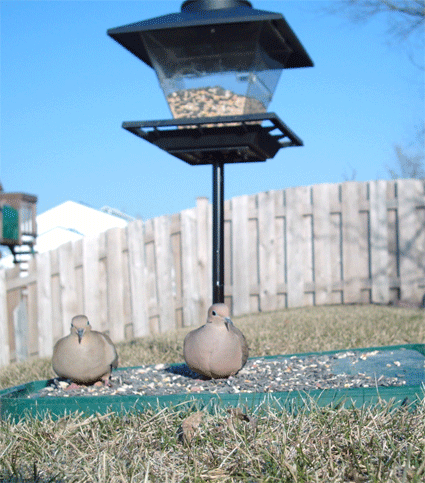
Often when I watch them sitting at the feeder, they seem to be in a trance or even sleeping; they will sit beside or on the food for minutes at a time, not moving. Why are Mourning Doves so sleepy? I guess mourning is an exhausting business.